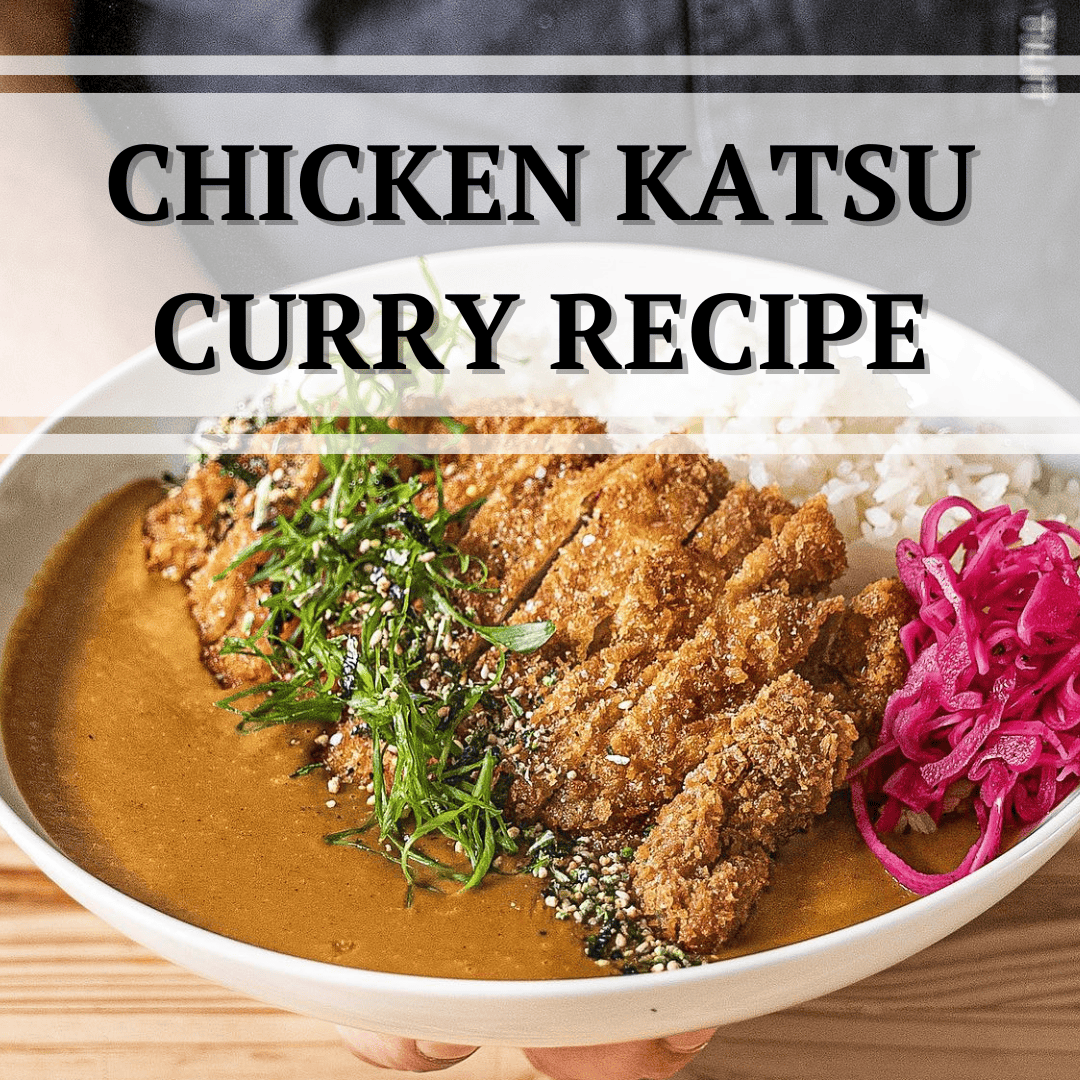Katsu curry is a beloved Japanese comfort dish that balances crispy, breaded cutlets with a warm, mildly spiced curry sauce poured over rice. “Katsu” means cutlet—usually chicken or pork—that’s coated in panko breadcrumbs and fried until golden brown.
The curry itself isn’t like Indian or Thai curry. Japanese curry is thicker, milder, and a little sweet, thanks to onions, carrots, and apples. It’s cozy and satisfying, the kind of dinner that feels indulgent yet nourishing.
What Makes This Curry a Healthy Dinner
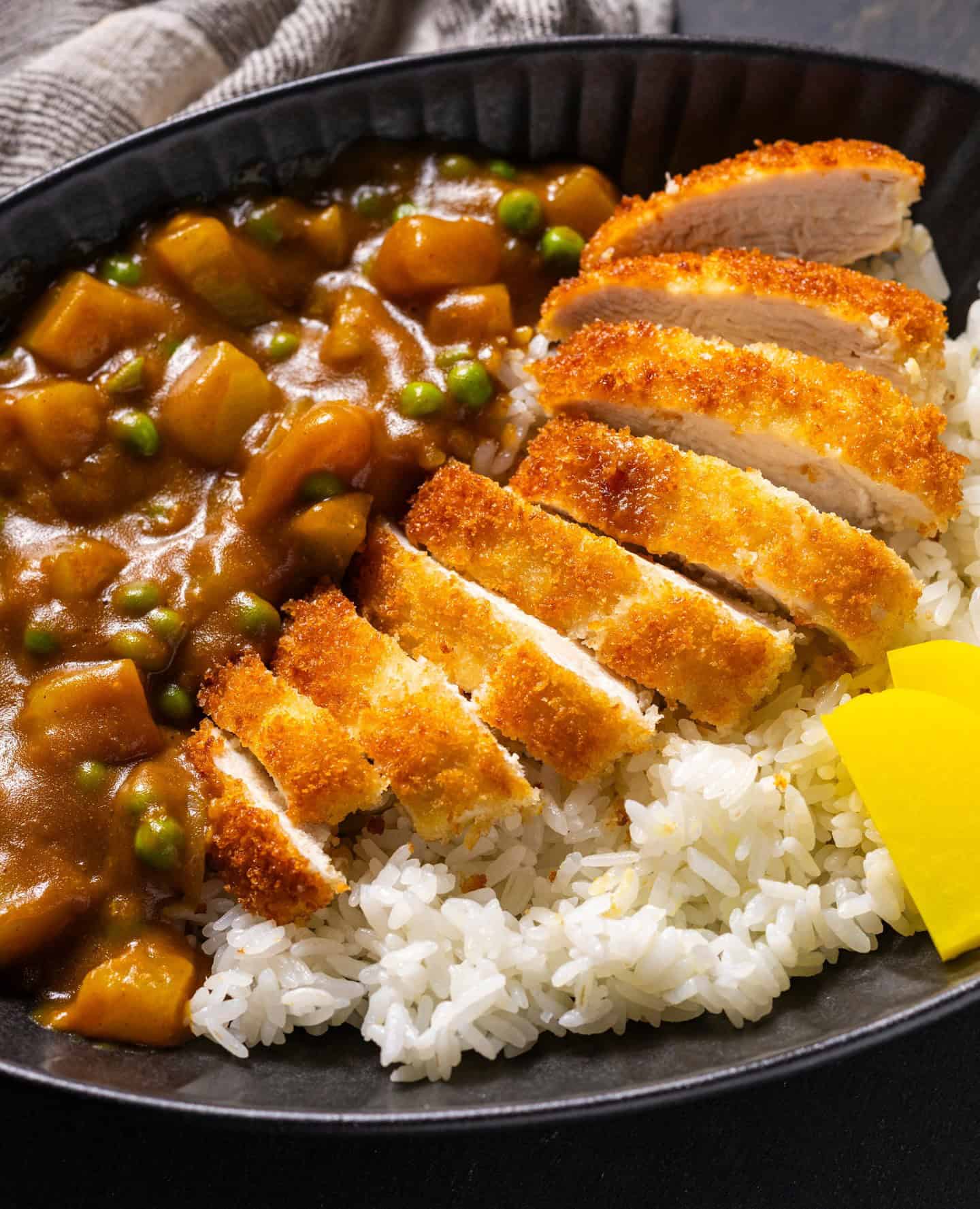
Despite being famous for its crispy katsu, this dish packs plenty of vegetables in the curry sauce, making it a wholesome meal. You’ll get nutrients from carrots, potatoes, onions, and peas—all simmered in a rich, flavorful base.
When you serve it with brown rice or quinoa, it becomes a balanced meal high in protein and fiber. It’s also easy to adapt for gluten-free or vegetarian diets.
If you’re worried about the greasiness because of the “deep-fried” part, then you can simply air-fry or oven-bake your katsu. The final result would still be crispy deliciousness, I assure you that.
What Is Japanese Curry?
Japanese curry is smooth, thick, and comfortingly mild. It’s typically made using Japanese curry roux cubes—a pantry staple you can find in most Asian grocery stores or online.
These cubes are essential. They contain a perfect blend of flour, spices, and fats that help the curry thicken and develop that signature silky texture.
Don’t skip them—no other shortcut comes close to the authentic taste and consistency they bring.
Tips for Cooking and Prepping
When I make katsu curry, I like to break the process into two parts: the curry and the cutlets.
Fry the katsu correctly. Make sure your oil is hot enough (around 350°F / 175°C). If it’s too cold, the coating absorbs oil and gets soggy; too hot, and it burns before the chicken cooks through.
Sauté your vegetables well. Let the onions and carrots caramelize slightly — that deepens the flavor of the curry sauce.
Don’t rush the roux cubes. Stir them in at the end, off the heat, and let them melt slowly into the sauce. That’s what makes it glossy and rich.
Keep the cutlets crispy. If you’re not serving right away, place the fried katsu on a wire rack (not paper towels) so they stay crunchy.
Recipe Variations and Substitutions
You can switch up the protein, vegetables, or base depending on your needs.
For a vegetarian version, use tofu or seitan instead of chicken, and vegetable stock instead of chicken broth. Skip the egg in the coating if you need it vegan—a cornstarch slurry or plant-based milk works great.
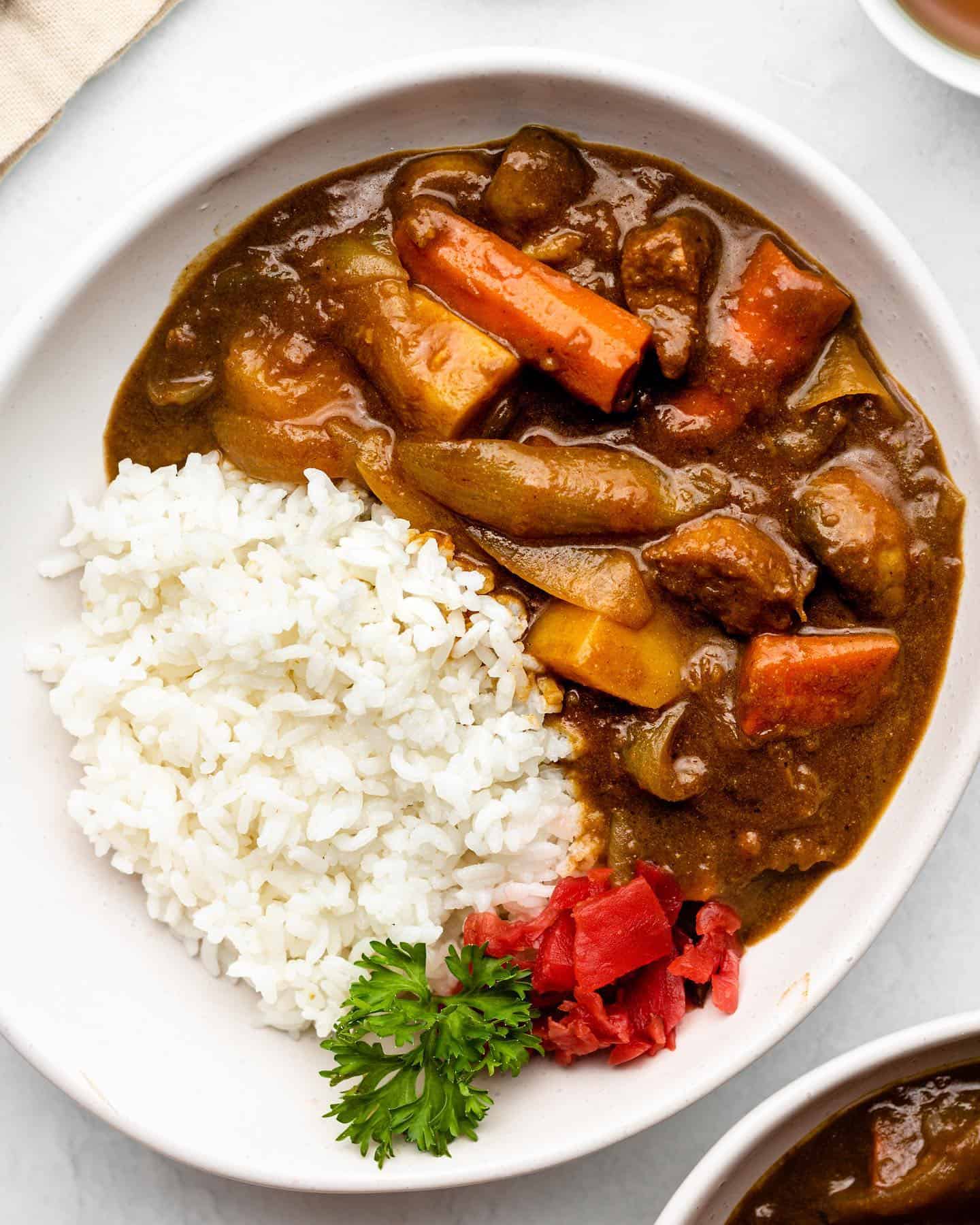
To make it gluten-free, use gluten-free panko and check your curry cubes’ ingredients (some brands include wheat).
Want to make it even lighter? Bake or air-fry your katsu cutlets instead of deep-frying. The texture stays crisp without all the oil.
What to Serve It With
Traditionally, katsu curry is served over steamed Japanese short-grain rice, which holds the sauce beautifully. But you can serve it with brown rice, cauliflower rice, or even noodles for variety.
It also pairs well with a simple cabbage slaw, sliced cucumber, or a few strands of pickled ginger to cut through the richness.
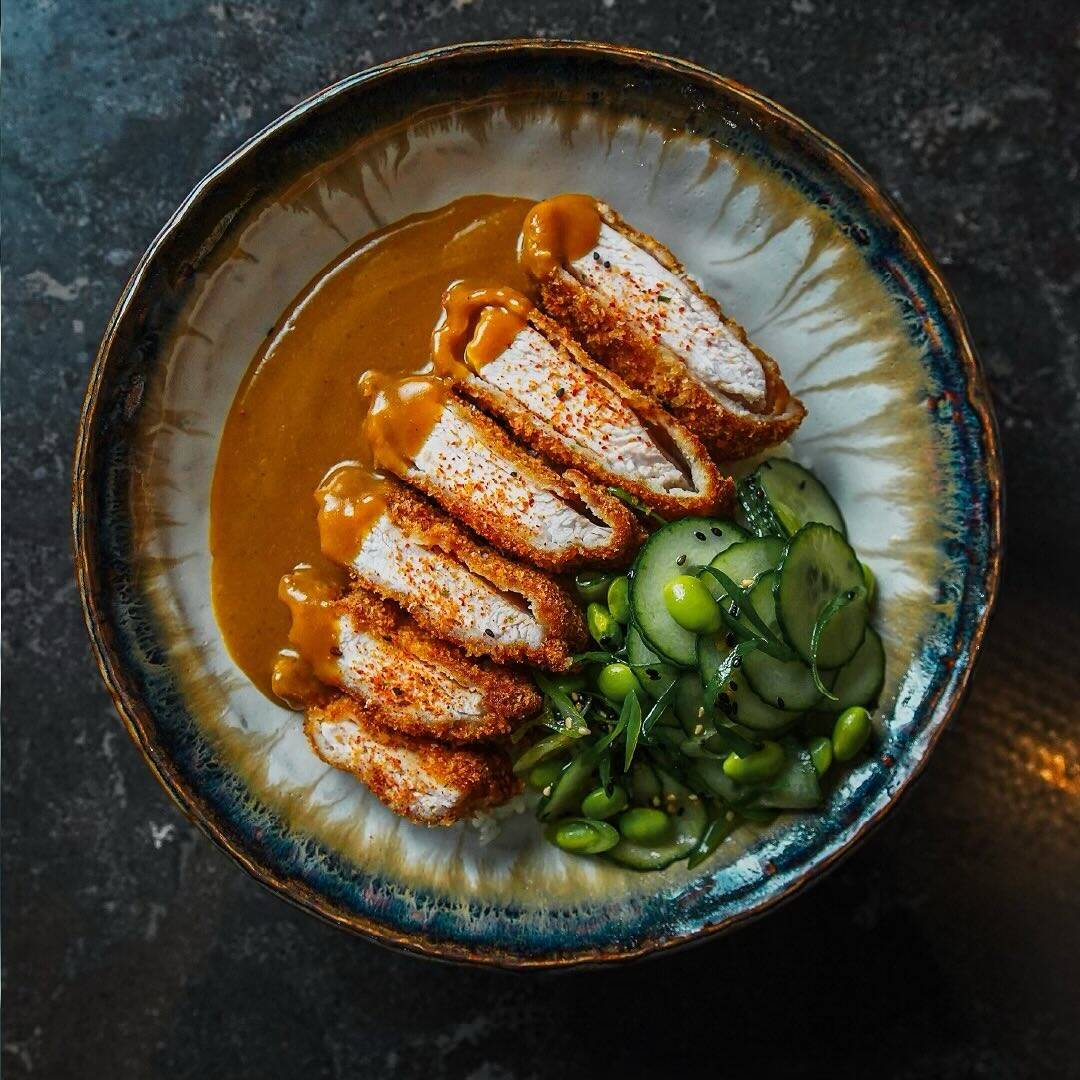
Storage and Make-Ahead Tips
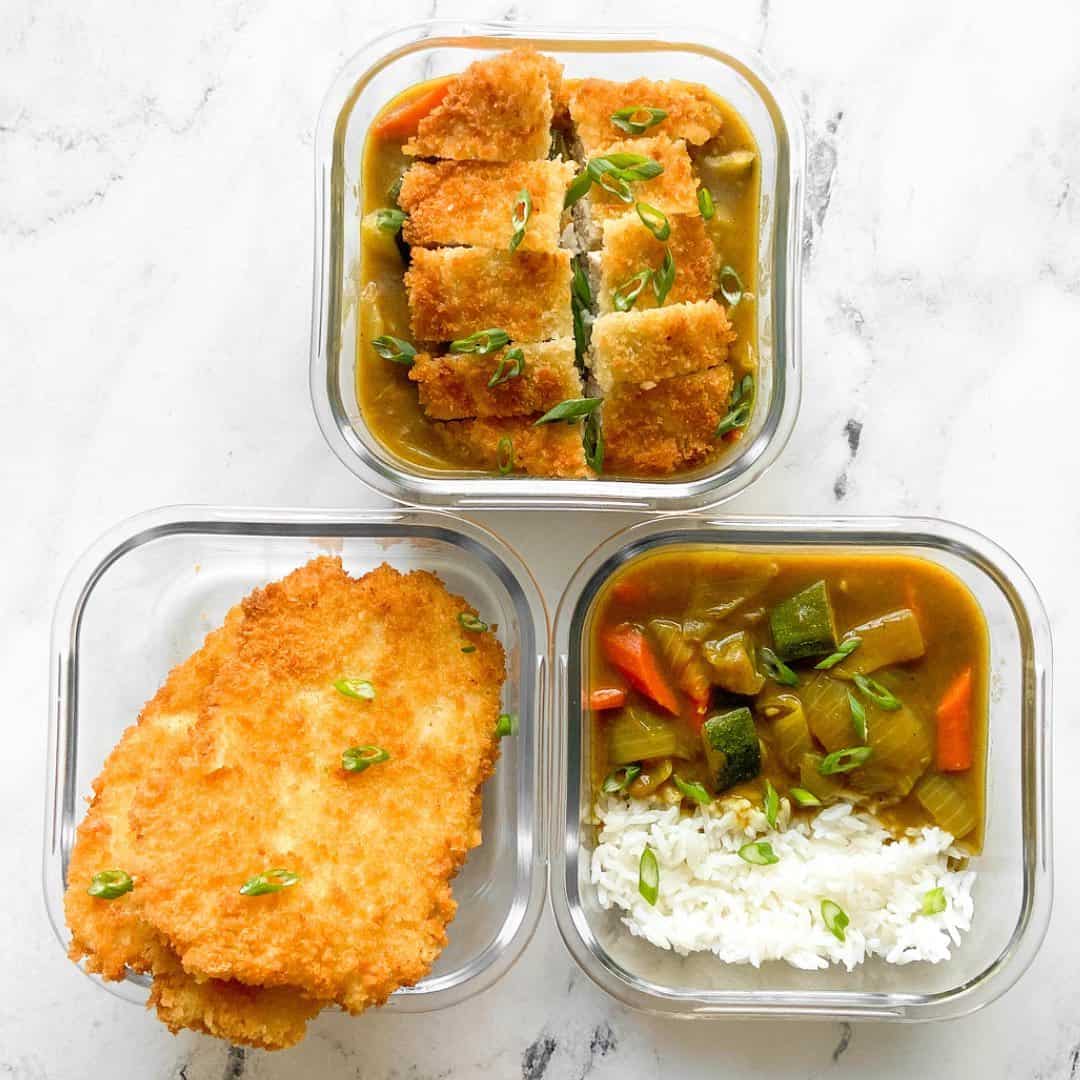
Katsu curry is great for meal prep because the components can be made ahead separately.
You can store the curry sauce in the fridge for up to four days and reheat it gently before serving. The katsu cutlets stay crisp if you keep them in an airtight container in the fridge and reheat them in an oven or air fryer.
If freezing, store the sauce and cutlets separately. The curry freezes beautifully for up to a month. Just thaw overnight in the fridge before reheating.
Frequently Asked Questions
What does katsu curry taste like?
It’s rich, savory, and slightly sweet—less spicy than other curries. The crispy cutlet contrasts with the smooth, hearty sauce, creating a perfect balance of textures.
Can I make katsu curry without curry cubes?
Technically, yes, but it won’t taste quite the same. The cubes are the shortcut to authentic Japanese curry flavor and consistency. You could make your own roux with curry powder, flour, and butter, but it’s more effort.
Can I use other proteins besides chicken for katsu curry?
Definitely. Pork, shrimp, or tofu all work well. You can even make a katsu-style portobello mushroom or eggplant for a vegetarian option.
Is Japanese curry spicy?
Not really. It’s usually mild, though you can find medium and hot versions of the curry cubes. You can always add chili flakes or hot sauce if you want more heat.
Can I make this ahead for lunch?
Yes — it reheats really well. Just store the sauce and katsu separately so the cutlet stays crisp. Combine them right before eating for the best texture.
Chicken Katsu Curry Recipe
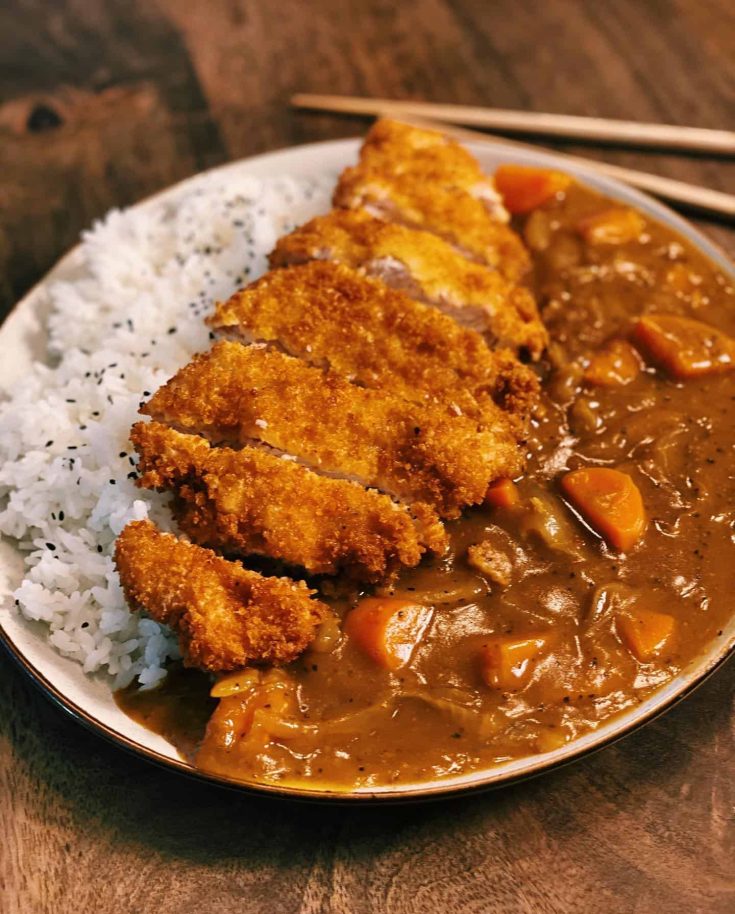
Image credit: @tiffy.cooks
Ingredients
For the Curry Sauce
- 1 tablespoon oil
- 1 onion, chopped
- 2 cloves garlic, minced
- 2 carrots, diced
- 1 medium potato, cubed
- 3 cups water or broth
- 3–4 Japanese curry cubes
- 1/2 cup frozen peas
- Salt and pepper, to taste
For the Katsu Cutlets
- 2 boneless chicken breasts, pounded thin
- 1/2 cup flour
- 2 eggs, beaten
- 1 cup panko breadcrumbs
- Oil, for frying
New Group
- Optional Add-Ins
- Cooked rice, for serving
- Sliced green onions or pickled ginger, for garnish
Instructions
- Cook the vegetables. Heat oil in a pot and sauté onion, garlic, carrots, and potato until softened and fragrant.
- Add the liquid. Pour in water or broth and simmer until the vegetables are tender.
- Stir in curry cubes. Remove from heat and stir in the curry roux cubes until fully dissolved and thickened.
- Prepare the chicken. Coat each piece of chicken in flour, dip it in egg, and press it into panko until evenly coated.
- Fry until golden. Heat oil in a pan and fry chicken on each side until crisp and cooked through.
- Assemble and serve. Slice the katsu and serve over rice with curry sauce spooned on top. Garnish as desired.
Featured image credit: @joshuaweissman

